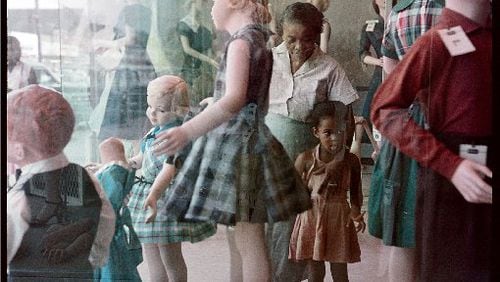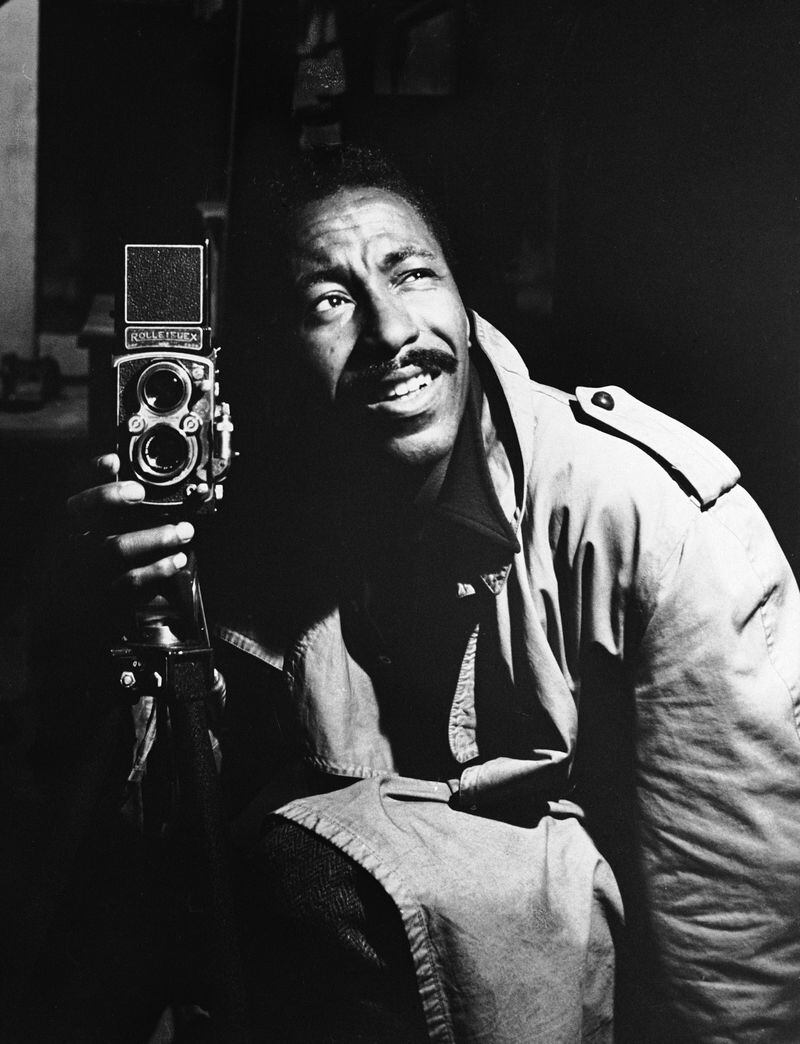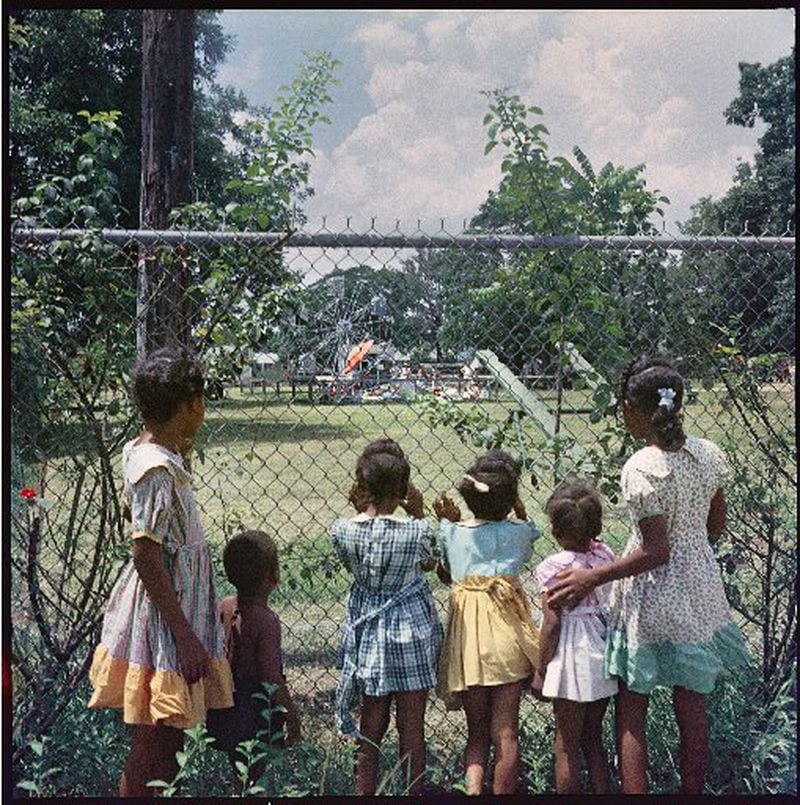The High Museum of Art lays claim to one of the most significant civil rights photography collections in the nation, comprising more than 300 black-and-white prints.
The exhibition announced Tuesday by the museum, however, is something altogether different: Opening Nov. 15, “Gordon Parks: Segregation Story” will feature 40 documentary images taken by the trailblazing photographer in 1956 Alabama in vibrant color.
Coinciding with the exhibit, the High will acquire 12 of the color pictures, most unseen for more than 50 years, for its rapidly growing permanent collection of photography, now numbering more than 5,800 prints.
Parks created the work on assignment for Life magazine, where he was its first African-American photographer, for the photo essay “The Restraints: Open and Hidden.” The 12-page, 26-image spread portrayed an extended family going about daily life in the Jim Crow South.
It captures activities of the related Thornton, Causey and Tanner families in Mobile and Shady Grove, Ala. Family members are shown attending church services, ordering ice cream, enjoying family gatherings, doing farm work, window-shopping and getting at-home haircuts.
There is a warm and cozy 1950s normalcy about the routines that Parks documented, except for the obvious barriers of social exclusion — from a movie theater’s red-lettered “COLORED ENTRANCE” neon sign under which two family members pause to the chain-link fence that six children press against, staring at an off-limits playground and, beyond it, a carnival ride.
The photos, in both their day-in-the-lives subject matter and pleasing aesthetics, stand in contrast to sometimes-intense black-and-white journalistic images of the civil rights movement that focused on leaders, organized protests and police clashes.
Credit: hpousner
Credit: hpousner
High Museum photography curator Brett Abbott believes Parks, known for his own potent black-and-white work, made a determined choice to shoot “The Restraints: Open and Hidden” in color.
“Photographers around this time were learning that aesthetic power and beauty in documentary photography could actually be a very powerful means of grabbing someone’s attention,” Abbott said. Then the “dissonance of something beautiful and something disturbing” could exert its power.
Further, Abbott believes Parks, in this unique approach, was attempting to build a sense of empathy in the viewer toward his subjects.
“I think there was an attempt (on Parks’ part) to say, ‘These people are people just like you, viewers, but they’re living under restraints.’ … He’s showing the beauty and dignity of their lives.”
Until recently, these time capsules were presumed lost. Then more than 200 transparencies were discovered at the bottom of a storage box, wrapped in paper and masking tape and labeled “Segregation Series,” at Purchase College/State University of New York. Parks’ archive moved there five years ago, and cataloging of its more than 4,000 prints and 20,000 negatives is continuing.
“To think that you just don’t have that many pictures of segregation in the South in color from the ’50s and here (they find) this one really incredible trove by one of the 20th century’s best documentary photographers,” Abbott said. “It’s just kind of an amazing thing to come across.”
Presented in collaboration with The Gordon Parks Foundation, “Segregation Story” will remain on view through June 7, 2015.
Credit: hpousner
Credit: hpousner








